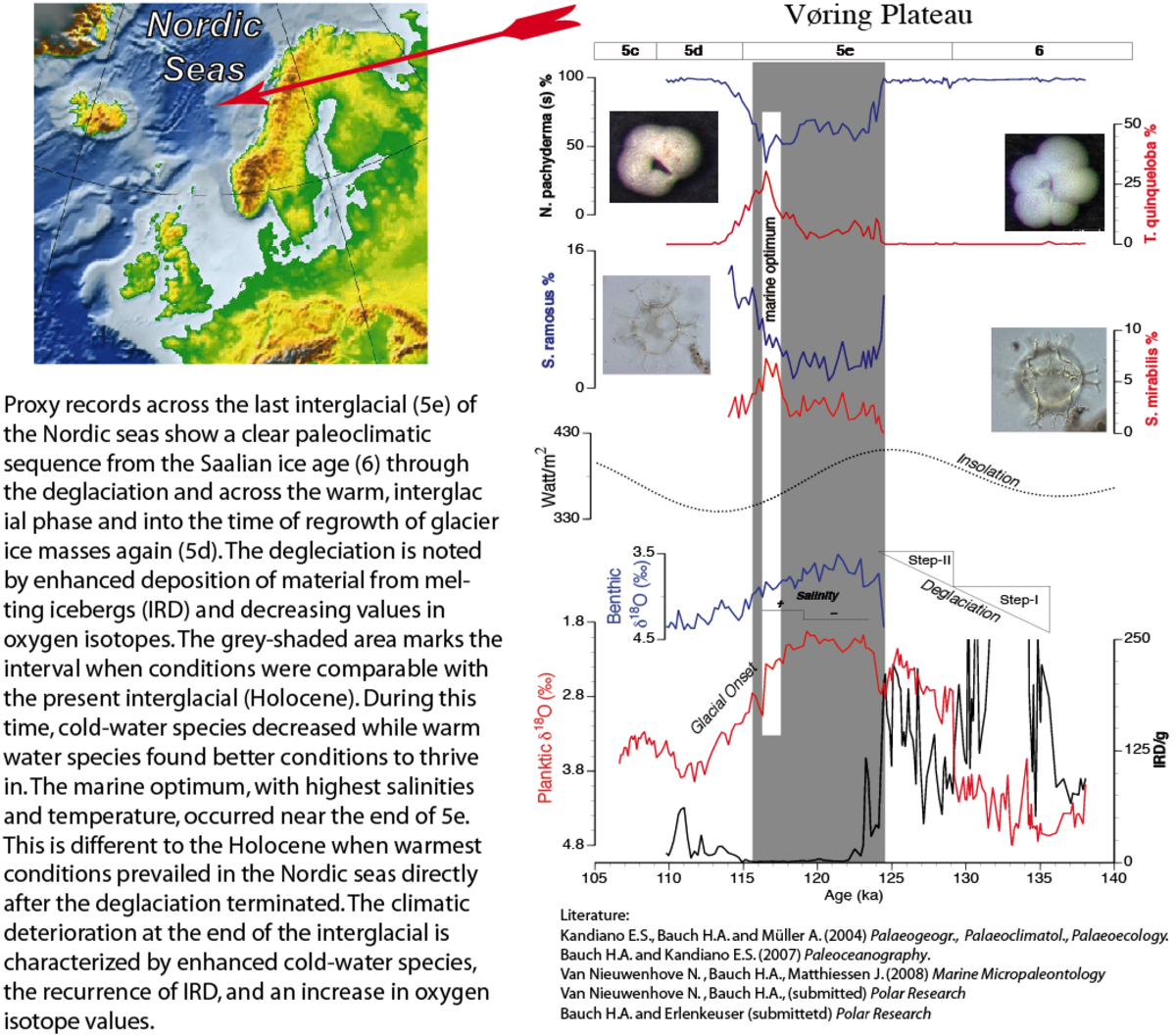Last Interglacial Ocean of the Nordic Seas - LIONS
Contact: Dr. Henning Bauch
Dr. Evgeniya Kandiano
Dr. Nicolas Van Nieuwenhove
The LIONS project is funded by the DFG. It focuses on the last interglacial (Marine Oxygen Isotope Stage or MIS) 5e) of the Nordic Seas, i.e., the Norwegian, Island and Greenland Sea. The area has a high responsiveness to climatic changes, and because temperatures during MIS 5e are believed to have been at least as high as today, paleoceanographic reconstructions thus could provide insight in possible future climate development.
The aim of the project is to reconstruct physical parameters of the surface water masses, which is done by combining data from classical proxies (IRD, isotopes) with quantitative and qualitative data obtained from dinoflagellate cysts and foraminiferal assemblages. Species of both fossil groups have a temperature-related distribution. Polar waters, for instance, are characterized by high abundances of the polar foraminiferal species Neogloboquadrina pachyderma (s). The dinoflagellate cyst species Spiniferites ramosus is typical for cold-temperate waters, while warmer water masses typically have raised occurrences of the warm-water indicative foraminifera, e.g. Turborotalia quinqueloba, and the dinoflagellate Spiniferites mirabilis. Group- and species dependent responses to changes in the physical parameters of the water masses, and biotic differences such as life cycle and habitat depth between both fossil groups, allows refined reconstructions of surface water properties to be made for MIS 5e of the Nordic Seas



